
Hawaiian traditional plate lunch: ahi poke, lomi lomi salmon, tako poke, kalua pork, poi, lau lau
Poke: Hawaii's Iconic Dish of Tradition and Innovation
Poke (pronounced poh-kay) is more than a dish in Hawaii. It's a cultural icon, a reflection of the islands' heritage, and a testament to the simplicity and freshness of its cuisine. This beloved preparation of diced raw fish seasoned with a variety of ingredients has captured hearts worldwide, but its origins and variations are deeply rooted in Hawaiian tradition. Poke tells the story of Hawaii's connection to the ocean, its blending of diverse cultures, and its ability to innovate while honoring the past.
The Origins of Poke
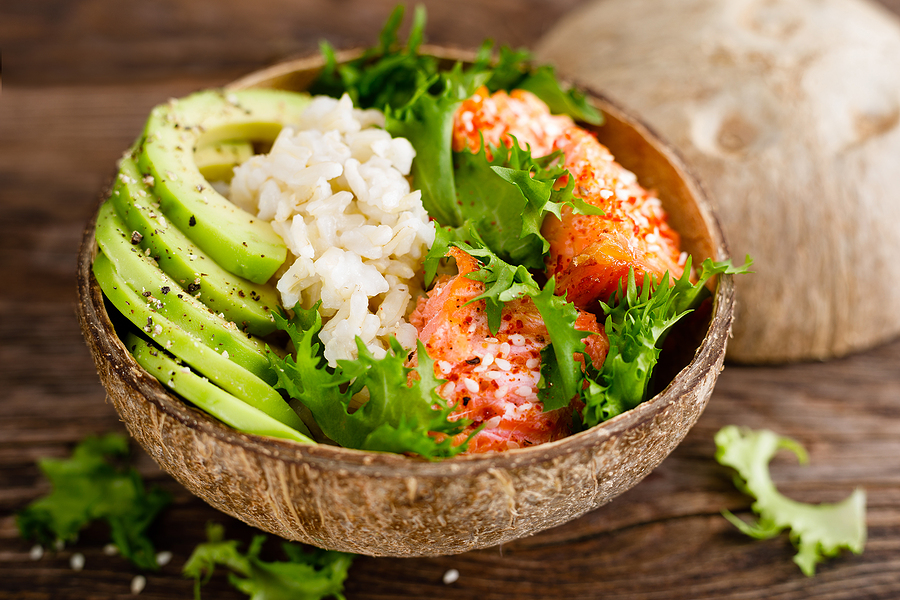
Hawaiian poke coconut bowl with grilled salmon fish, rice and avocado. Healthy food.
Poke, which means "to slice" or "to cut crosswise" in Hawaiian, has ancient origins. Before Western contact, Native Hawaiians would prepare raw fish by cutting it into bite-sized pieces and seasoning it with native ingredients like sea salt, limu (seaweed), and 'inamona' (a relish made from roasted kukui nuts). Fish was a staple in the Hawaiian diet, with varieties like ahi (yellowfin tuna) and he'e (octopus) playing a central role in sustenance and cultural practices. Traditional poke was made right at the shoreline, where fishermen would clean their catch and prepare it fresh from the sea. It was a dish born of necessity, simplicity, and a deep connection to the ocean. The abundance of fresh fish in Hawaii made poke an integral part of daily life, offering nourishment that was both practical and flavorful.
The Evolution of Poke
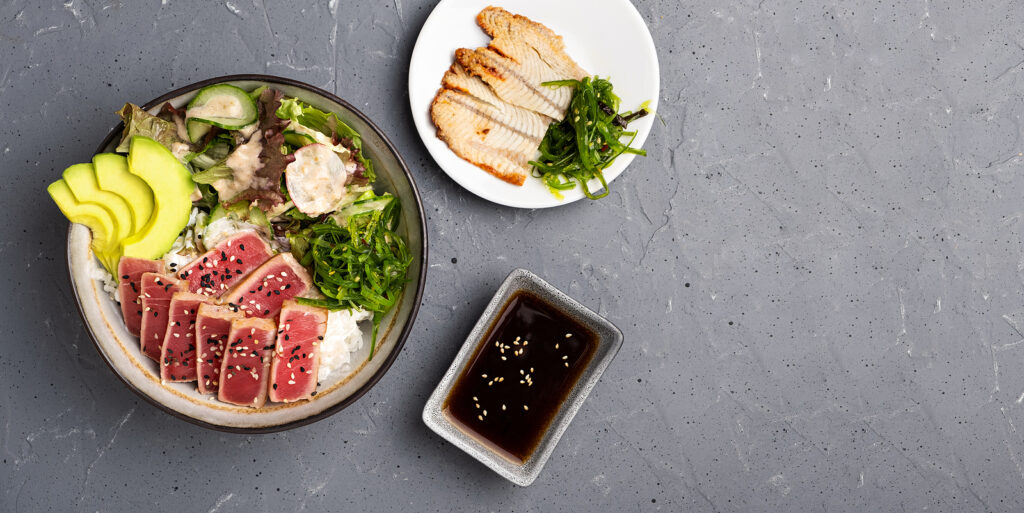
Modern poke bowl with tuna, avocado, and various ingredients on a gray surface with soy sauce
The introduction of new ingredients and culinary influences to Hawaii during the 19th and 20th centuries transformed poke into the versatile dish we know today. Immigrant communities from Japan, China, Korea, and the Philippines brought their culinary traditions, introducing ingredients like soy sauce, sesame oil, and chili peppers, which began to appear in poke preparations. Japanese immigrants, in particular, played a significant role in shaping modern poke. The use of shoyu (soy sauce) and wasabi became common, adding umami and heat to the dish. Over time, ahi tuna became the most popular fish for poke, prized for its rich flavor and tender texture. The 1970s marked a turning point for poke as it transitioned from a homemade staple to a commercial phenomenon. Supermarkets across Hawaii began offering pre-made poke in deli cases, packaged for convenience and variety. This accessibility solidified poke's status as a go-to dish for locals and visitors alike, enjoyed at family gatherings, beach picnics, and luaus.
Variations of Poke

Hawaiian tuna poke with mango avocado onion and sesame seeds.
The beauty of poke lies in its adaptability. While traditional poke remains beloved, modern variations have expanded its possibilities, incorporating new ingredients, flavors, and textures.
Ahi poke, made with fresh tuna, shoyu, sesame oil, and green onions, is perhaps the most iconic version. Variants like spicy ahi poke, featuring creamy mayonnaise and sriracha, add a fiery kick, while avocado or macadamia nuts bring richness and crunch. Poke made with salmon, tako (octopus), or shellfish like scallops offers variety for seafood enthusiasts, and vegetarian options featuring tofu or marinated vegetables cater to a broader audience.
Regional flavors have also influenced poke. Korean-inspired poke includes gochujang (spicy red chili paste) and kimchi, while tropical twists incorporate mango, coconut milk, or pineapple. These creative interpretations reflect Hawaii's multicultural identity and its openness to innovation.
Poke Bowls and the Global Phenomenon
In recent years, poke has transcended its Hawaiian roots to become a global food trend. The concept of the "poke bowl" gained immense popularity, combining poke with a base of rice or salad greens and an array of toppings like edamame, pickled vegetables, and crispy onions. Poke bowl restaurants have sprung up worldwide, offering a customizable, health-conscious meal that resonates with modern dining preferences.
While this international rise in popularity has introduced poke to new audiences, purists often emphasize the importance of honoring its Hawaiian origins. In Hawaii, poke is traditionally served simply, without the elaborate additions of poke bowls. The focus remains on the quality and freshness of the fish, seasoned to enhance its natural flavors.
Pokes Place in Hawaiian Culture
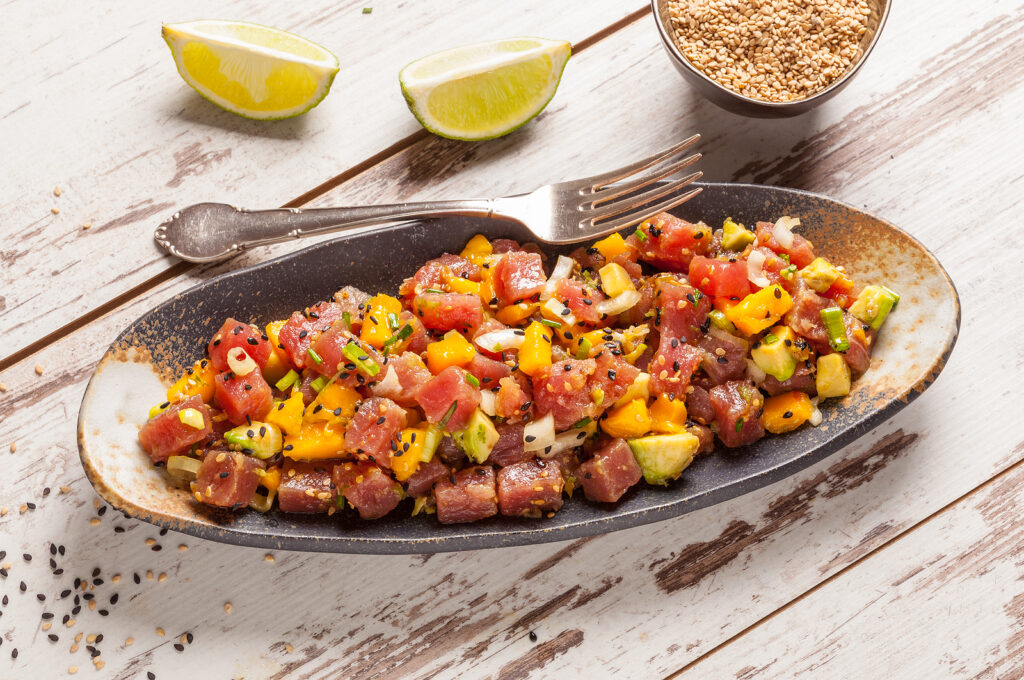
Hawaiian tuna poke with mango avocado onion and sesame seeds.
Poke is more than a dish; it's a symbol of Hawaiian culture and identity. It reflects the islands reliance on the ocean, their respect for natural resources, and their tradition of sharing food as an expression of hospitality and community. At gatherings and celebrations, poke is a staple, a dish that brings people together and connects them to the land and sea.
Hawaii's thriving poke festivals highlight its cultural significance and culinary artistry. Events like the annual I Love Poke Festival celebrate poke in all its forms, showcasing the creativity of local chefs and the enduring love Hawaiians have for this iconic dish.
The Importance of Sustainability
As poke continues to grow in popularity, sustainability has become an important consideration. Overfishing and environmental concerns have raised awareness about the need to source seafood responsibly. Many poke establishments in Hawaii and beyond are committed to using sustainably caught fish, supporting local fisheries, and educating consumers about the importance of ocean conservation.
Efforts to promote responsible fishing practices and protect marine ecosystems ensure that poke can be enjoyed for generations to come without compromising the health of the oceans.
Making Poke at Home
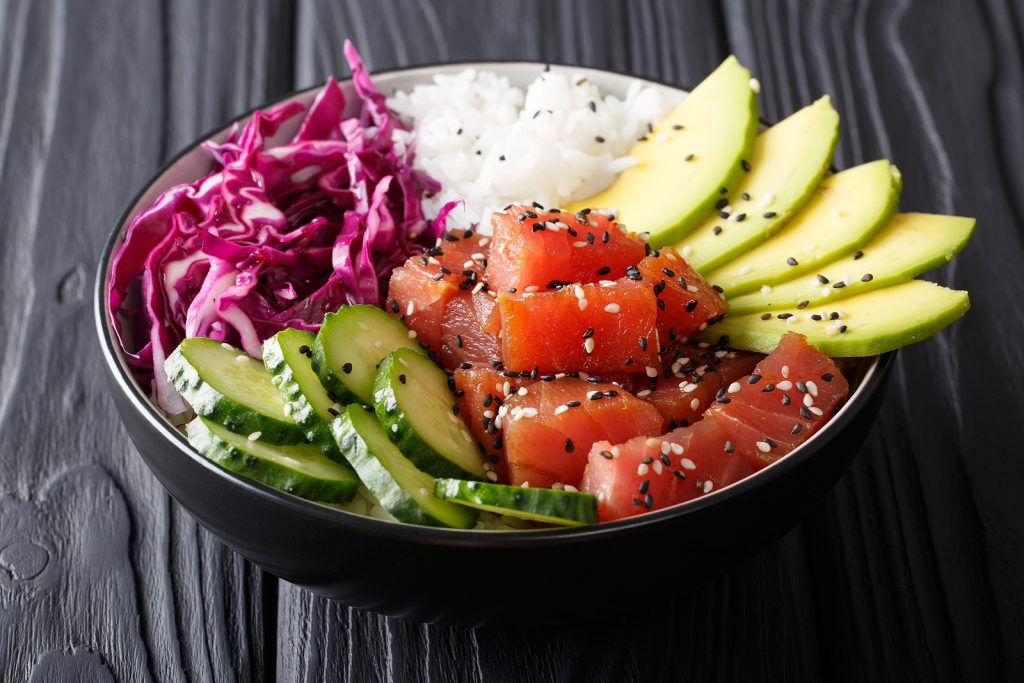
Organic food: tuna poke bowl with rice fresh cucumbers red cabbage and avocado close-up on the table, horizontal
For those inspired to try poke at home, the key lies in using the freshest ingredients possible. Quality fish is essential, as the simplicity of poke relies on the natural flavors of its components. While traditional recipes call for minimal seasoning, home cooks can experiment with flavors and textures to create their own interpretations of this beloved dish.
Preparing poke at home also offers an opportunity to connect with its Hawaiian roots, appreciating the simplicity, creativity, and respect for nature that define the dish.
Conclusion: A Dish That Defines Hawaii
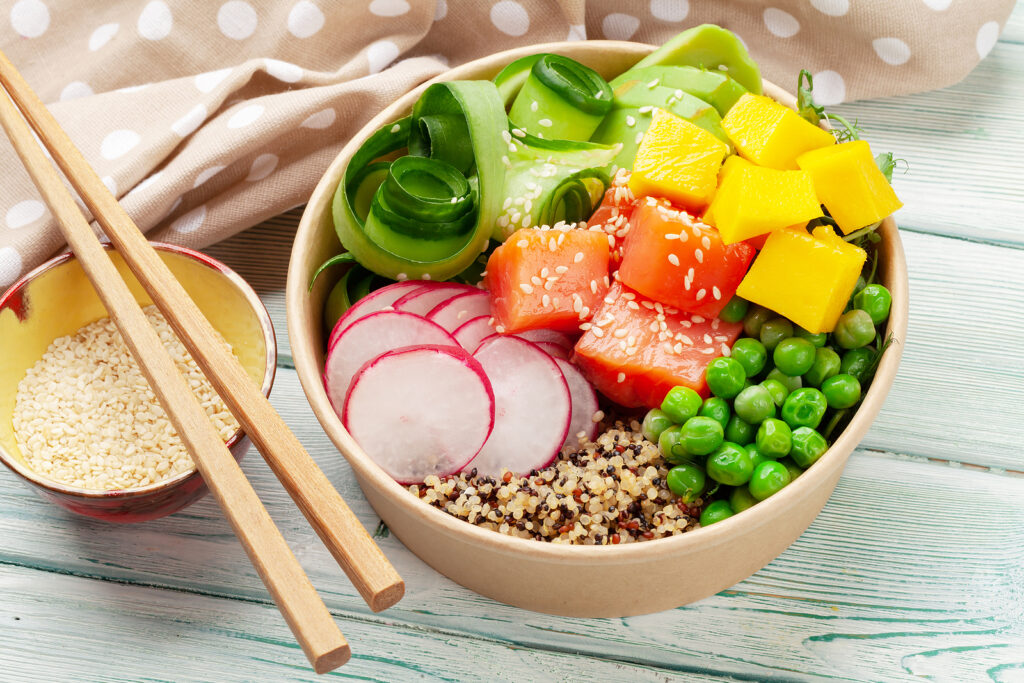
Poke bowl with salmon, cucumber and mango. Traditional Hawaiian meal
Poke is more than a culinary delight—it's a story of Hawaii's people, history, and spirit. From its humble origins as a fisherman's meal to its modern variations and global appeal, poke embodies the essence of aloha: love, respect, and a deep connection to the land and sea. Whether enjoyed in a bustling Honolulu market, at a family luau, or from a poke bowl halfway around the world, this dish carries with it the flavors and traditions of Hawaii, offering a taste of the island's unique culture with every bite.